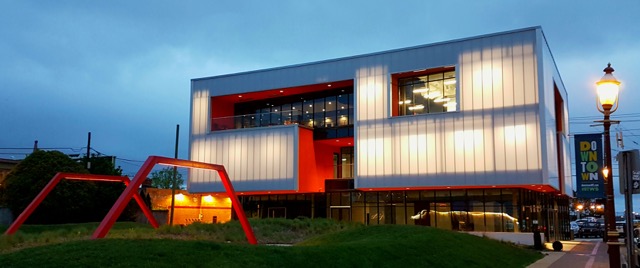By Katy Shick

Before going to see “The Witch”, the new horror movie from director, Robert Eggers, the viewer should know that it isn’t a horror movie in the recent tradition of “The Conjuring”. Although “The Witch” delivers plenty to chill one’s veins, scaring its audience isn’t its main purpose. For that very reason, those looking simply for a good scare should perhaps wait for the next one. The title witch remains chiefly in the shadow of the woods, only appearing in sporadic, but terrifying glimpses. The dread of the witch builds throughout the story, but like an abortive sneeze, she never steps out into the full sun to deliver the payoff terror horror movies usually deliver. Instead, the terror remains very much restrained, but nonetheless still powerful.
Rather, “The Witch” is a Puritan allegory, based on a collection of folktales and fairytales from Seventeenth Century New England. The witch does not come uninvited to the family who settles on the edge of the forest; instead she comes in response to their sins and brings with her the full power of Satan, who easily finds a chink in the family’s “Christain Armor.”
The story opens as the father of the family stands in front of the elders of a Puritan community defending his individual religion that has gone against the church’s teachings. Banished from the plantation for refusing to recant his beliefs, he and his family drive their cart through its gates watching as they close behind them, on their way on their “errand into the wilderness” to test their faith against the temptation of the “black man of the forest.”
Despite raising several buildings and planting a well-tended corn crop, their lives at the edge of the wilderness are soon threatened. One day as the oldest daughter, Thomasin, is playing peek-a-boo with the new baby on the grass behind the house, inexplicably the baby disappears while Thomasin’s eyes are briefly closed. She desperately scans the open area for a sign of the baby, but she only sees the slight movement of a small tree that has been disturbed at the edge of the woods. While the viewer watches the witch scurry through the woods, carrying the baby, the family is left to wonder what happened. Was it a wolf or a witch that took Samuel?
The mother is plunged into inconsolable grief, and the decline of the family begins. As the days turn into weeks, the mystery of the baby’s disappearance begins to erode the family’s bond. The crops do not predict enough yield to provide for the family throughout the winter, forcing the father, William, to sell the mother’s prized silver cup to buy traps for hunting. William tells his oldest son, Caleb, to keep the traps a secret from the mother, who has become almost completely consumed in her own grief. This first lie sets the family’s feet along its ill-fated path, seeming to alert the ever vigilant Satan that their family might soon be willing to “sign their names in the Devil’s book.”
The family has little chance against Satan, who has already infiltrated its sanctity. The father’s insistence on remaining on his homestead despite the increasing danger reveals his pride, the very sin that convinced him that he could survive this test in the first place. This pride leads him to lie and fight against the best interest of his family’s wellbeing. Whenever the decision to remain is called into question, he fights even harder to exert his will, often obsessively splitting firewood in an attempt to literally take an ax to the figurative forces threatening his will.
However, the stronger he fights, the more his family slips away from him. The mother, Katherine, cannot move beyond her grief, which becomes its own vanity and closes her eyes to the other children who still need her. Caleb, a preteen boy, early in the story experiences lustful thoughts upon gazing at Thomasin’s gapped shirt. When he returns home after being captured by the witch (who appeared to him as a seductive, beautiful woman), he vomits up an apple. This could be a reference to the lie he told his mother about searching for apples to cover up the fact he was hunting with his father, but it seems more likely a reference to the apple with which Eve seduced Adam in the Garden of Eden. Even Thomasin, who is to be the strongest character, begins the story in desperate confession of her sins and often seems to agree with her mother’s and sister’s accusations that she is wicked.
However, “The Witch” is a New England folktale written in the Twenty First Century. Even though the majority of the family suffers a gruesome fate as punishment for their sins, Thomasin doesn’t seem so ill fated. Her future is much less clear. A teenager on the verge of womanhood, Thomasin presents a problem to her family. Her mother is perpetually angry with and mistrustful of her (even before she is the last one to see the baby alive). She is closest to her father, who defends her against her mother’s and sister’s accusations. Their bond is shown to be almost too close in the scene in which she is ordered by her mother to strip her father’s muddy clothes off. A young woman caught up in Freud’s Electra Complex, Thomasin is thrown into a confusing world in which she is told she is sinful and that she must be removed from the family before she comes to ruin. History has proven that the majority of those accused of witchcraft were women. Most were non-conformists; some openly embraced their sexuality; and almost all threatened the stability of the community.

It is the subtlety of the ending that saves “The Witch” from becoming a cautionary tale and makes it less of a true allegory and more of a modern folktale with a great deal of “gray” in the lesson taught. Eggers delivers this subtlety with skill. Only his first feature film, “The Witch” was selected as a Grand Jury Prize nominee at the Sundance Film Festival, where he won the award for Best Director. He meticulously recreates the Puritan world in which the family lives, both in sets, costumes, and dialogue as well as in their experience of the world around them.
Despite bringing a Twenty First Century perspective to the story, he never steps outside of the characters’ points of view. They are Puritans with Puritan beliefs. The family members are punished for their own actions and are not hapless victims. They live in a terrifying world in which the unknown hints at evil. The forest that surrounds the family’s home is innocuous enough with the exception of the fact that only ten feet in, it is dark, foreboding, and impenetrable.
The witch as well as Satan are real, and their powers are irresistible. Satan is not a cheap villain here. The viewer is shown neither the witch’s nor Satan’s full form. The witch is only shown in profile, her crone’s old and misshaped body makes short appearances chilling— gleefully dancing in her house, suddenly looking over her shoulder at the twins who discover her in the barn. Likewise, Satan is only a terrifyingly seductive voice, whispering in Thomasin’s ear as he moves behind her, his gold doublet and plumed hat catching the light. Although these villains do not jump out to stop the viewer’s heart, they stick around to chase away sleep two nights later, long after the credits have rolled.
“The Witch” is still playing at a/perture. You can find showtimes and purchase tickets HERE.

Katy Shick teaches English at North Forsyth High School in Winston-Salem. An avid life long movie fan, she has been reviewing films for family, friends, and the captive audiences of her classroom for decades.







